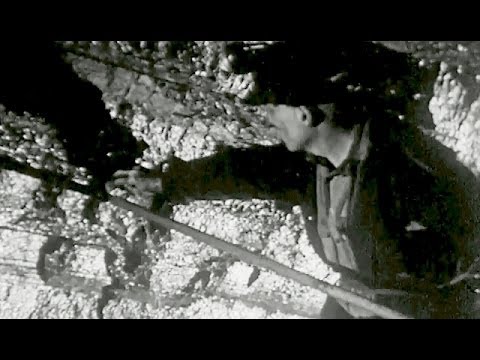How Coal Mines Work: “Mining and Preparation of Anthracite Coal” c 1934 Delaware & Lackawanna Coal
more at
Very good demonstration of coal mining processes in the 1930s.
‘Underground mining scenes… Sequence shows miners leaving work, washing up and going home to greet families.’
NEW VERSION with improved video & sound:
Earth Sciences, mining, oil, etc. playlist::
Public domain film from the Prelinger Archives, slightly cropped to remove uneven edges, with the aspect ratio corrected, and mild video noise reduction applied.
The soundtrack was also processed with volume normalization, noise reduction, clipping reduction, and/or equalization (the resulting sound, though not perfect, is far less noisy than the original).
Anthracite (Greek ἀνθρακίτης (anthrakítes), “coal-like,” from ἄνθραξ (ánthrax), coal) is a hard, compact variety of mineral coal that has a high luster. It has the highest carbon content, the fewest impurities, and the highest calorific content of all types of coals, which also include bituminous coal and lignite.
Anthracite is the most metamorphosed type of coal (but still represents low-grade metamorphism), in which the carbon content is between 92.1% and 98%. The term is applied to those varieties of coal which do not give off tarry or other hydrocarbon vapours when heated below their point of ignition. Anthracite ignites with difficulty and burns with a short, blue, and smokeless flame.
Anthracite is categorized into standard grade, which is used mainly in power generation, and high grade (HG) and ultra high grade (UHG), the principal uses of which are in the metallurgy sector. Anthracite accounts for about 1% of global coal reserves, and is mined in only a few countries around the world. China accounts for the majority of global production; other producers are Russia, Ukraine, North Korea, Vietnam, the UK, Australia and the US. Total production in 2010 was 670 million tons…
Other terms which refer to anthracite are black coal, hard coal, stone coal…
blind coal… Kilkenny coal… crow coal… and black diamond.
In the United States, anthracite coal history began in 1790 in Pottsville, Pennsylvania, with the discovery of coal made by the hunter Necho Allen in what is now known as the Coal Region. Legend has it that Allen fell asleep at the base of Broad Mountain and woke to the sight of a large fire because his campfire had ignited an outcropping of anthracite coal. By 1795, an anthracite-fired iron furnace had been built on the Schuylkill River.
Anthracite was first experimentally burned as a residential heating fuel in the US on 11 February 1808, by Judge Jesse Fell in Wilkes-Barre, Pennsylvania, on an open grate in a fireplace. Anthracite differs from wood in that it needs a draft from the bottom, and Judge Fell proved with his grate design that it was a viable heating fuel.
In spring 1808, John and Abijah Smith shipped the first commercially mined load of anthracite down the Susquehanna River from Plymouth, Pennsylvania, marking the birth of commercial anthracite mining in the United States. From that first mine, production rose to an all-time high of over 100 million tons in 1917…
From the late 19th century until the 1950s, anthracite was the most popular fuel for heating homes and other buildings in the northern United States, until it was supplanted first by oil burning systems and more recently by natural gas systems…
China today mines by far the largest share of global anthracite production, accounting for more than three-quarters of global output. Most Chinese production is of standard-grade anthracite, which is used in power generation. Increased demand in China has made that country into a net importer of the fuel, mostly from Vietnam, another major producer of anthracite for power generation, although increasing domestic consumption in Vietnam means that exports may be scaled back.
Current U.S. anthracite production averages around 5 million tons per year. Of that, about 1.8 million tons were mined in the state of Pennsylvania…

